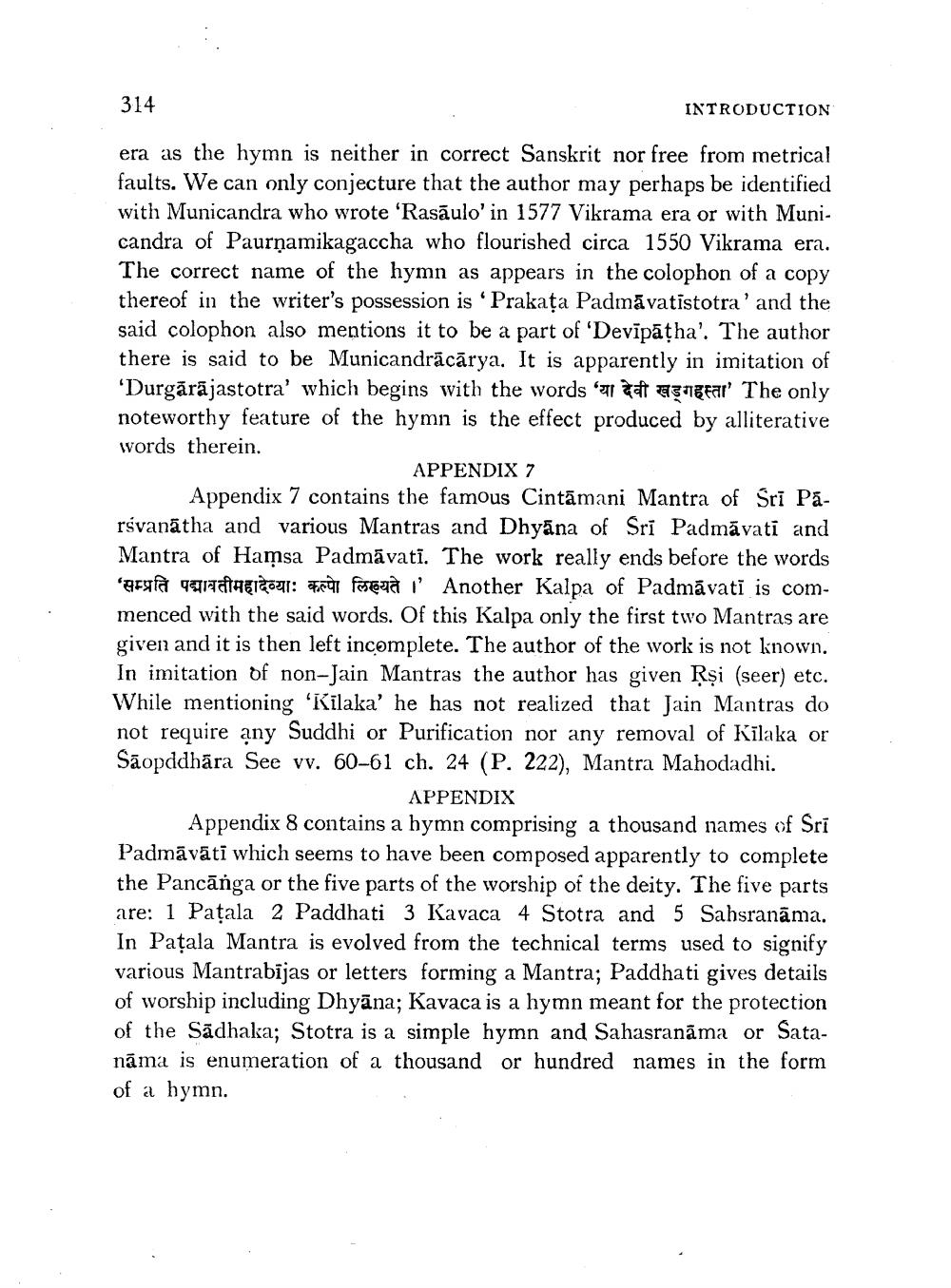________________
314
INTRODUCTION
era as the hymn is neither in correct Sanskrit nor free from metrical faults. We can only conjecture that the author may perhaps be identified with Municandra who wrote 'Rasaulo' in 1577 Vikrama era or with Municandra of Paurṇamikagaccha who flourished circa 1550 Vikrama era. The correct name of the hymn as appears in the colophon of a copy thereof in the writer's possession is 'Prakața Padmavatistotra' and the said colophon also mentions it to be a part of 'Devīpāṭha'. The author there is said to be Municandrācārya. It is apparently in imitation of 'Durgārājastotra' which begins with the words 'a' The only noteworthy feature of the hymn is the effect produced by alliterative words therein.
APPENDIX 7
Appendix 7 contains the famous Cintamani Mantra of Śrī Pārsvanatha and various Mantras and Dhyana of Sri Padmavati and Mantra of Hamsa Padmavati. The work really ends before the words 'सम्प्रतिपद्मावतीमहादेव्याः कल्पो लिख्यते ।' Another Kalpa of Padmāvati is com - menced with the said words. Of this Kalpa only the first two Mantras are given and it is then left incomplete. The author of the work is not known. In imitation of non-Jain Mantras the author has given Rşi (seer) etc. While mentioning 'Kilaka' he has not realized that Jain Mantras do not require any Suddhi or Purification nor any removal of Kilaka or Sãopddhāra See vv. 60-61 ch. 24 (P. 222), Mantra Mahodadhi.
APPENDIX
Appendix 8 contains a hymn comprising a thousand names of Sri Padmāvāti which seems to have been composed apparently to complete the Pancanga or the five parts of the worship of the deity. The five parts are: 1 Pațala 2 Paddhati 3 Kavaca 4 Stotra and 5 Sahsranāma. In Patala Mantra is evolved from the technical terms used to signify various Mantrabījas or letters forming a Mantra; Paddhati gives details of worship including Dhyāna; Kavaca is a hymn meant for the protection of the Sadhaka; Stotra is a simple hymn and Sahasranama or Satanāma is enumeration of a thousand or hundred names in the form of a hymn.




